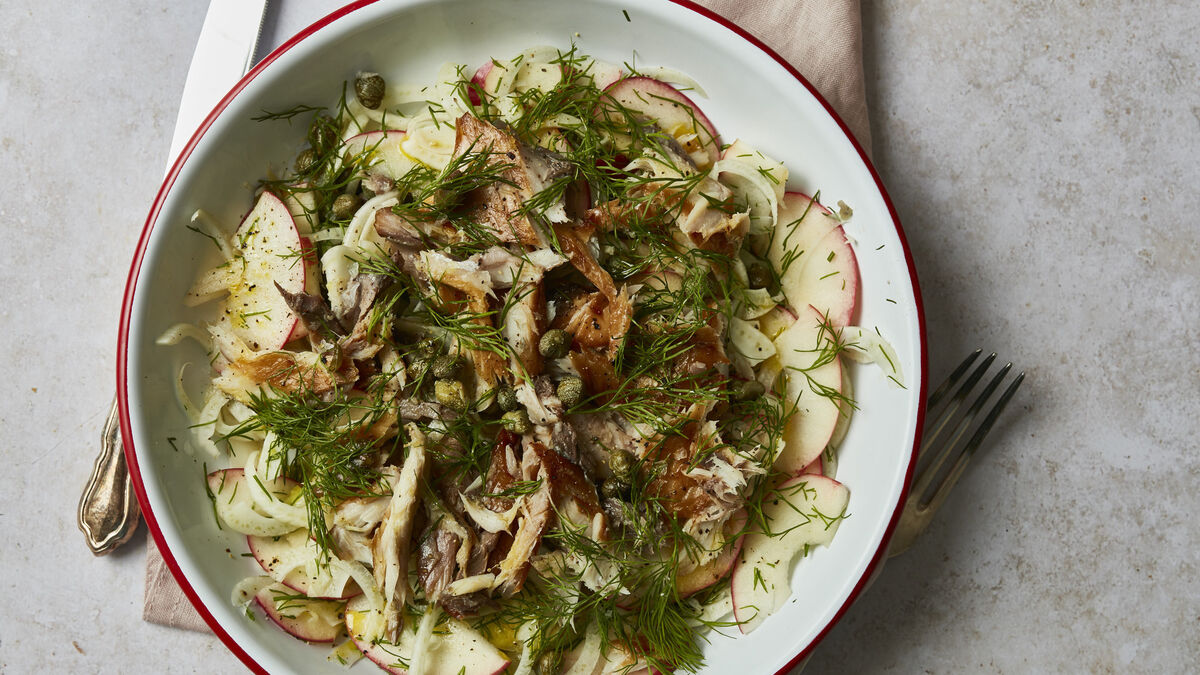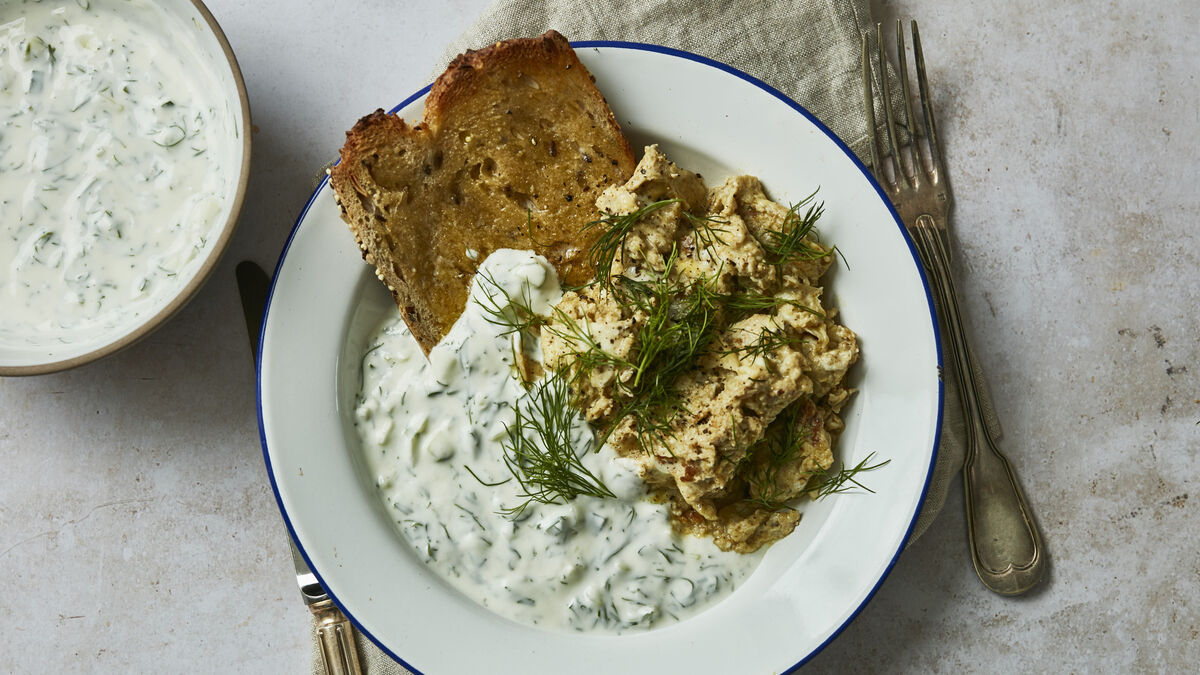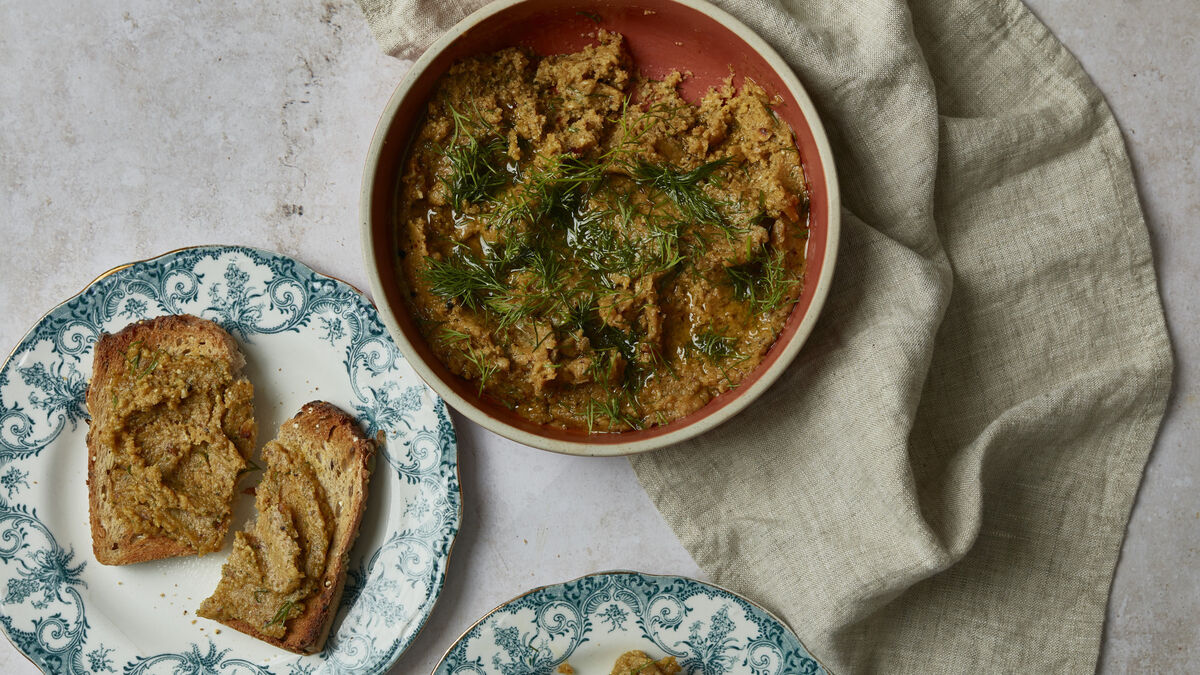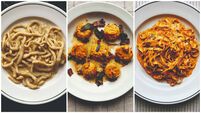Currabinny Cooks: Our favourite recipes with dill, which doesn't deserve its bad reputation

Dill has a particular affinity to smoked or cured fish. Picture: Bríd O'Donovan.
Dill has a bit of a bad reputation. Lacking the romance of basil or the sophistication of rosemary, this sweet, pungent herb will be familiar to anyone who’s eaten a pickle, or maybe tried gravlax. In Western Europe, its usage largely stops about there. You only have to venture into the Slavic or Scandinavian world to witness dill in all its glory, taking its role as the stalwart herb of Eastern and Northern Europe very seriously.
With its feathery leaves and bright yellow, umbel shaped flowers floating above the other crops, dill is great for adding visual interest to the herb garden. We grow ours in two large pots where it thrives, provided we water it every few days to keep it moist. Other than that it is an incredibly easy crop to grow and maintain. Dill does best from direct sowing as its roots do not like to be disturbed. Dill was traditionally grown as a medicinal herb, used as a remedy for coughs, headaches and as medicine for stomach problems. Dill is more often used in the kitchen these days, however: the seeds, leaves, and even the pretty flowers are edible. Dill is also a doubly beneficial plant to grow in the garden or vegetable plot as its umbelliferous flowers attract bees and other wildlife. Dill has a flavour somewhere between celery and parsley with the peppery undertones of anise and the feint aroma of lemon bringing a lingering warmth to a dish. Dill is best paired with starch like potatoes, grains, lemons, onions, beetroots and of course in pickles.
In the shops, pick up dill that looks crisp and fresh. Dill wilts quickly so be mindful that you should use it within a day or two of buying it. The stems of freshly picked dill can be placed in water to keep them somewhat less prone to wilting.
When preparing dill, use a good sharp knife for chopping as it is quite delicate and prone to bruising. You do not want mushy dill in your food. Like a lot of herbs, it is always best to add dill to a dish towards the very end of cooking or even after the cooking has been done.
Excessive heat will kill the vibrant flavour of dill.
These recipes hopefully give you a good idea of some new ways you can add dill to your food beyond just pickles, borscht and smoked salmon.
Dill does have a particular affinity to smoked or cured fish. Gravlax is the most obvious example but mackerel also works wonderfully with dill. This simple salad is all about contrasting flavours which work well together. Fat, acid and sweetness complement each other perfectly. Get good quality hot smoked mackerel for this. Ireland has some wonderful producers like Sally Barnes in Woodcock Smokery in West Cork.
Mackerel Salad with Shaved Fennel, Apple and Dill
This simple salad is all about contrasting flavours which work well together

Servings
2Preparation Time
10 minsCooking Time
10 minsTotal Time
20 minsCourse
MainIngredients
1 large fennel bulb, trimmed and very thinly sliced
2 tart irish apples, cored and sliced into wedges
150 – 200g hot smoked mackerel fillets, skin removed
Juice and zest of 1 lemon
1 tablespoon of capers
1 handful of dill fronds, chopped
1 handful of parsley leaves chopped
For the dressing:
1 tablespoon of apple cider vinegar
Juice of 1 lemon
1-2 tablespoons of Dijon mustard
4 tablespoons of olive oil
Sea salt and black pepper
Method
To make the dressing, whisk all the ingredients together in a small bowl and set aside.
Mix together the fennel, apple dill, parsley and capers in a medium sized mixing bowl and squeeze in the juice of 1 lemon and its zest.
Season with a pinch of sea salt and mix everything together well before turning out onto a serving plate. Flake over the mackerel and drizzle the dressing before serving.
Spiced Eggs with Dill
Tzaziki Dill is a fairly common and popular herb in Turkish and Middle Eastern cooking.

Servings
2Preparation Time
10 minsCooking Time
15 minsTotal Time
25 minsCourse
MainIngredients
170g of Greek yoghurt
1 clove of garlic, crushed
Juice of half a lemon
Good handful of dill fronts, chopped
Pinch of seasalt, tablespoon of olive oil
½ cucumber, halved and deseeded, finely chopped
½ teaspoon of chilli flakes
For the eggs:
4 organic eggs
2 teaspoons of curry powder
50g butter
2 tablespoons of cream
Sea salt and black pepper
1 teaspoon of cumin seeds
½ teaspoon of chilli flakes
Method
Mix yogurt, lemon juice, cucumber, garlic, chopped dill and chilli flakes in a medium bowl, season with sea salt and set tzatziki aside.
Toast the cumin seeds on a hot dry pan, tossing regularly until fragrant, around 2 minutes.
Transfer to a small bowl and let cool. When cooled mix it together with the chilli flakes and sea salt until you have a little spice mix.
Whisk together the eggs, cream ½ the spice mix and a pinch of salt in a medium bowl. Heat the butter in a large frying pan over a medium high heat. Add the curry powder and stir around for a few seconds until fragrant. Pour in the egg mixture and let it just about set undisturbed on the pan and then push all the cooked edges into the middle of the pan with your wooden spoon. Repeat this until you have barely set scrabbled eggs, about 2-4 minutes.
Transfer the eggs in between two plates and serve with a good dollop of dill tzatziki. Sprinkle over the leftover spice mix and garnish with some dill fronds.
Parsnip Dip with Dill
This is a great substitute when you are sick and tired of having hummus. We of course love hummus, but it often seems like we forget about other dips and sauces which may be just as good to dip some toasted pitta into.

Servings
2Preparation Time
10 minsCooking Time
40 minsTotal Time
50 minsCourse
SideIngredients
2-3 medium parsnips, peeled
1 tablespoon of honey
3 tablespoons of toasted almonds
Handful of dill fronds
1 red chilli, deseeded and finely chopped
1 fat clove of garlic, crushed
100g good quality feta
Juice of 1 lemon
Olive oil
Method
Preheat the oven to 200C.
Cut the parsnips into thin lengths. Place in a lined baking dish with a good pinch of sea salt, a drizzle of honey and olive oil. Cover with foil and bake for around 40 minutes until very soft and mashable.
In a food processor, blitz the cooked parsnips together with the almonds, dill, chilli, garlic and lemon juice and drizzle in around 60mls of olive oil. Remove to a mixing bowl and crumble in the feta and then stir it into the parsnip dip.
Serve in a nice bowl with toasted pitta bread, drizzle a little extra virgin olive oil all over and garnish with reserved chopped almonds and some dill fronds.






